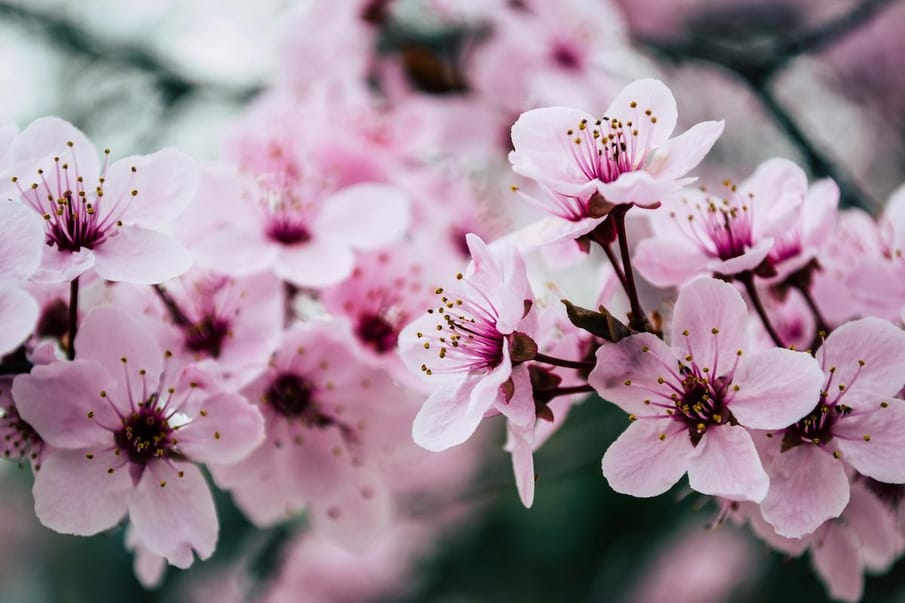Could embracing ancient Japan’s concept of short, seasonal moments offer an emotional balm for modern-day souls?
Shall we meet-up when ‘rain moistens soil’, or perhaps you’re free when ‘frogs start singing’? I’m busy around the time ‘peonies bloom’, but might book a getaway when ‘thunder ceases’. Confused? Well, you too could use these rather cryptic descriptions if you scheduled your life around an ancient calendar – that of Japan’s microseasons.
In the UK, we make do with spring, summer, autumn, and winter. But in ancient Japan, they divided the year into more specific periods – a copious 72 in all.
Based on a format originating from the Chinese calendar, which itself follows 24 categories, the Japanese added a further three subdivisions under each category to mark specific events in the natural world throughout the year. This created 72 microseasons, each around five days long.
These fleeting periods of time were given poetic names by the 17th century astronomer Shibukawa Shunkai. For example: within the season Risshun (beginning of spring) is the microseason ‘east wind melts ice’; following the spring equinox, Seimei (meaning ‘pure and clear’) contains ‘wild geese fly north’; Taisho (‘greater heat’) harbours five days of ‘earth is damp, air is humid’; in October, Kanro (‘cold dew’) welcomes ‘crickets chirp around the door’; while Toji (winter solstice) heralds ‘deer shed their antlers’.
Of course, Japan’s microseasons are shaped by the country’s unique ecology and climate. In the UK, we may not hear crickets chirping in October, but we do have our own specific seasonal moments: the days when snowdrops emerge, or the week when your garden is full of dew-laden spider webs. It could even be personal to you, such as the cluster of mornings when the sunlight perfectly falls on your favourite chair.
It’s a beautiful ancient concept, but here’s how it could also be an emotional balm for 21st century life…
“While the broader benefits of green spaces on mental health are well-documented, the act of observing microseasons amplifies these effects,” says psychotherapist and clinical hypnotherapist Ella McCrystal. “Engaging with nature in this intentional manner can magnify feelings of tranquillity, and reduce symptoms of anxiety, depression, and mental fatigue.
“We are constantly bombarded with stimuli, often causing us to overlook the subtle and intricate changes that occur in nature around us. The concept of microseasons provides an opportunity to reconnect with the natural world on a deeper, more mindful level. Observing small and distinct phases of the year can serve as a potent therapeutic tool, offering numerous benefits to our psychological wellbeing,” she adds.
With that in mind, here are just a few benefits of focusing on microseasons.
Emphasising the present can reduce anxiety
“The very act of observing subtle shifts in nature encourages mindfulness,” Ella explains. “By attuning ourselves to these changes, whether it’s the first bloom of a specific flower, or the initial hint of autumnal chill, we cultivate a heightened sense of presence. This mindfulness can counteract feelings of overwhelm and anxiety, rooting us in the present moment.”

Eloise Skinner, psychotherapist, author, and yoga instructor, agrees: “Microseasons anchor us in the present moment, helping us avoid excessive reflection on the past, or over-analysis of a potential future.”
Slowing down time
In our busy lives, it’s common to feel that time is moving too quickly. Chronophobia, the fear of the passage of time, can cause us to feel sad or anxious about something we have no control over. Observing microseasons may help.
Eloise says: “If we feel time is slipping away, it can make us feel overwhelmed, resentful, or nostalgic. Focusing on changes that are happening right in front of us can deliver a slowed-down sense of time. Once we bring our mind fully into what is happening in the ‘now’, we’re much less likely to feel as though time is rapidly passing us by.”
Finding comfort in change
Often, when we’re in a bad place mentally, it can feel endless. However, Ella explains: “The natural life cycle within the environment reminds us that everything comes to an end. There is always hope, new life, and rebirth – when something ends, something new begins. We can choose to focus our hopes and intentions on the new, rather than losing ourselves in the past.
“Acknowledging this teaches us lessons about the transitory nature of life, and the importance of allowing space for change and growth.”
Beating loneliness
Watching nature reminds us that we are all part of the bigger picture. “By observing microseasons, we align ourselves with the natural rhythm of Earth,” Ella says. “This can instil a feeling of connectedness, reminding us that we’re part of a larger system. Feeling interconnected can combat feelings of isolation and loneliness.”
How to bring microseasons into your life
To make the most of this array of benefits, here are three simple, but effective ways to take note of microseasons, and embrace the moment.
Get outside every day:
To notice small seasonal changes, it’s best to get outside and benefit from fresh air, natural light, and exposure to nature – all proven to be good for our physical and mental health. Whether walking, running, or cycling, explore your favourite green space to spot natural transformations every few days.
Keep a journal:
This could be written, photos on your phone, or a mix of both. Engage the senses, and document any weekly changes in your natural environment – from the feel of the air to the appearance of plants, or the sound of birds and insects. If you spot any clusters of commonality, have a go at naming your own microseasons (‘slippery leaf week’ anyone?).

Create a ritual:
Eloise suggests marking the end of one microseason and the beginning of another by performing your own little ceremony or ritual, alone or with friends or family, to symbolically accept the changing nature of life.
Ella explains: “Rituals provide a sense of structure and predictability, which are key components for mental stability. Recognising the fleeting nature of each microseason can foster a sense of gratitude. As we appreciate the uniqueness of each phase, we become more thankful for the present, knowing it will soon transition into something different. This gratitude can act as a buffer against depressive thoughts and enhance overall life satisfaction.”


Comments